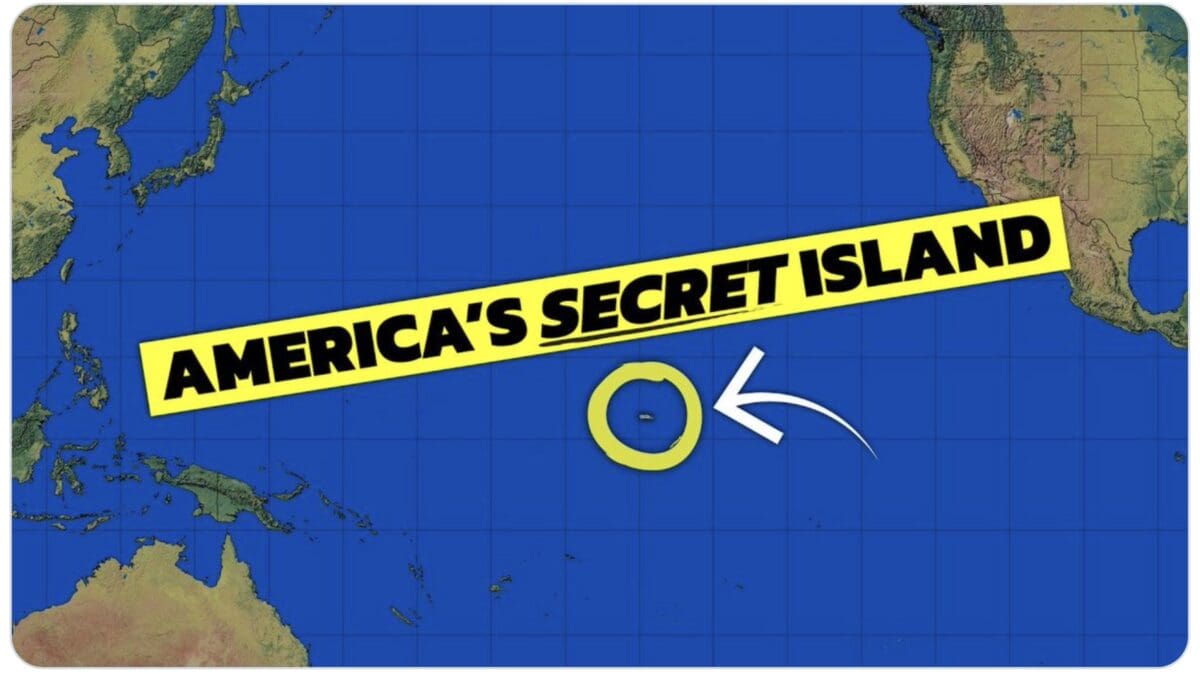America’s Secret Island: The Enigmatic Palmyra Atoll Revealed
Deep in the Pacific Ocean lies America’s secret island—Palmyra Atoll—a U.S. territory so remote and pristine that even most Americans have never heard of it. Let alone visited. This isn’t your typical tropical getaway. It’s a place where seabirds outnumber humans a million to one, and the rules of accessibility don’t apply. Inspired by a captivating YouTube video from Geography by Geoff (check it out here), let’s check out the story of Palmyra Atoll, exploring its geography, wildlife wonders, and turbulent history. Moreover, it remains one of the planet’s most exclusive spots.
The Remote Geography of America’s Secret Island
Palmyra Atoll isn’t just far away—it’s isolated in every sense. It’s situated roughly 1,000 miles south of Hawaii and halfway to American Samoa. This ring-shaped coral formation is a remnant of an ancient volcano. Over millions of years, as the volcano sank, coral reefs built up around it. This created a stunning atoll with about 50 tiny islets totaling just over four square miles of land.
These low-lying islands are barely six feet above sea level. They sit in the Intertropical Convergence Zone, where northern and southern trade winds clash. The result? Endless rain—175 inches annually—turning the place into a humid, lush wonderland. It’s no wonder America’s secret island feels like a forgotten corner of the world. It’s vulnerable to rising seas but resilient in its isolation.
A Pristine Ecosystem Like No Other
What makes Palmyra truly special is its thriving, interconnected ecosystem—a rare glimpse into nature untouched by human interference. The atoll hosts one of the Pacific’s last intact coastal strand forests. It’s dominated by towering Pisonia trees and dense ferns. But the real magic happens through a nutrient cycle powered by millions of seabirds. This includes rare red-footed boobies and sooty terns.
Their guano fertilizes the soil. Heavy rains wash it into the lagoons, nourishing vibrant coral reefs teeming with sharks, manta rays, and giant clams. Here’s a mind-blowing fact: unlike most reefs plagued by overfishing and bleaching, Palmyra’s ecosystem is predator-dominated. Sharks rule the waters, signaling a healthy, balanced paradise. It’s a “living laboratory,” showing what oceans looked like before widespread human impact. For nature lovers, America’s secret island represents hope amid global environmental challenges.
The Dramatic History: From Shipwrecks to Supreme Court Battles
Palmyra’s story reads like a thriller novel. First “discovered” by Westerners in 1798 and named after a shipwreck in 1802, it was shrouded in legends of cursed treasures and vanishings. In 1862, it was claimed by the Kingdom of Hawaii under King Kamehameha IV. It later became U.S. territory when Hawaii was annexed in 1898.
The atoll stayed private until the 1920s, when the Fullagar family bought it for $15,000 as a copra plantation and retreat. Then came World War II. After Pearl Harbor, the U.S. Navy transformed America’s secret island into a military stronghold. They dredged reefs, built runways, and housed 6,000 troops. They turned paradise into a refueling hub. A Japanese sub even shelled it once.
Post-war, the Fullagars sued to reclaim it, winning a landmark Supreme Court case in 1947 that upheld private property rights. They held on for decades, rejecting wild ideas like nuclear waste dumps or casinos. Finally, in 2000, The Nature Conservancy bought it, shifting its fate from exploitation to protection.
Why You Can’t Visit America’s Secret Island Today
In our era of easy travel, why is Palmyra off-limits? It’s not due to government secrets but a deliberate conservation mission. Managed as a National Wildlife Refuge by the U.S. Fish and Wildlife Service and The Nature Conservancy, access is restricted to safeguard its fragility. Uncontrolled visitors could introduce invasive species, devastating the ecosystem.
Only 4 to 20 people—mostly scientists and staff—live there at a time, bunking in WWII-era ruins amid thriving wildlife. They’ve eradicated rats, boosting bird populations and reef health. Donors to The Nature Conservancy can visit. However, it requires a hefty contribution. For researchers, it’s a baseline for studying climate threats like ocean acidification. It offers strategies to save other ecosystems. America’s secret island isn’t hidden for mystery’s sake—it’s preserved for the planet’s future.
Final Thoughts: A Beacon of Hope in the Pacific
Palmyra Atoll embodies the wild, untamed beauty of nature. It’s a reminder that some places are best left alone. As global threats loom, this U.S. territory stands as a “control group” for conservation, proving recovery is possible. If you’re intrigued by remote wonders, watch the full video that inspired this post. It’s packed with visuals and insights that bring America’s secret island to life.
What do you think—would you donate big to visit, or is admiring from afar enough? Share your thoughts below, and if you enjoyed this, explore more hidden gems like the Falkland Islands. Thanks for reading!

